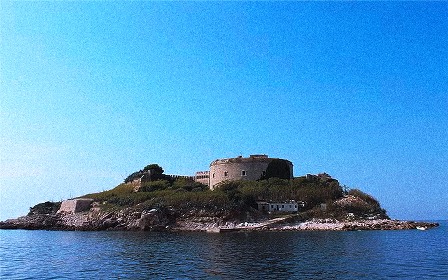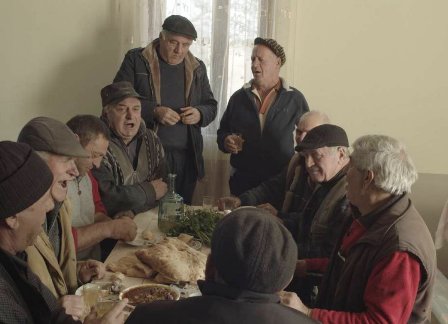|
HEART OF SARAJEVO FOR BEST DOCUMENTARY FILM
Award in the amount of €4,000, sponsored by the Government of Switzerland
HEART OF SARAJEVO FOR BEST SHORT DOCUMENTARY FILM
Award in the amount of €2,000
HUMAN RIGHTS AWARD
Award in the amount of €3,000, sponsored by the Kingdom of the Netherlands
SPECIAL JURY PRIZE
Award in the amount of €2,500
WORLD PREMIERES
A DAY, 365 HOURS / BIR GÜN, 365 SAAT
Türkiye, Croatia, 2023, 79 min.
Director: Eylem Kaftan
Two young women are joined together by their shared experience of being abused. Their unexpected meeting forms a strong bond that gives them the strength both to take on their abusers in court and to help other young women seek justice.
BODY / TELO
Slovenia, Croatia, North Macedonia, 2023, 91 min.
Director: Petra Seliškar
BODY is a unique and poetic journey into the most unknown areas of the self, through the testimony of Urška, who spent twenty years struggling between life and death. A professional piano player and a former fashion model, Urška had everything going for her until she was struck by illness. Recovering from encephalitis, she had to get to know herself again and learn to live: to walk, to recognise her daughter, to understand – and love – her body, which seems to want to destroy her.
BOTTLEMEN / FLAŠAROŠI
Serbia, Slovenia, 2023, 84 min.
Director: Nemanja Vojinović
On the outskirts of Belgrade, one of the largest landfills in Europe sprawls across the remains of the ancient Vinča civilization. Plastic bottle collectors, a.k.a. “Bottlemen”, eke out a difficult living in this toxic landscape. Now, their vibrant community is facing new and greater threats. Faced with the imminent privatisation of the landfill, an entire community of bottlemen is brought to a dead end, trapped in the gap between technological modernisation and an inadequate social care system. While the environmental impact of the landfill’s modernisation is unknown, the fragile community of collectors will have to face their uncertain destiny on their own.
FAIRY GARDEN / FANNI KERTJE
Hungary, Romania, Croatia, 2023, 83 min.
Director: Gergő Somogyvári
Hidden in the heart of the woods of Budapest, an unorthodox father-daughter relationship blossoms between Fanni, a nineteen-year-old transgender teenager, and Laci, a sixty-year-old homeless man. Together, they form a makeshift family, supporting each other through hardship and change. This unconventional coming-of-age documentary unveils their tale of perseverance and acceptance, and the triumph of finding home amidst the struggles of life.
FRAN AND VERKA; OR, A USUAL DAY IN AN ABANDONED VILLAGE
Kosovo, 2023, 14 min.
Director: Sovran Nrecaj
Fran and Verka are the sole inhabitants of Vërnakollë—the place they first met many years ago, were married, and have been living ever since. After the 1999 war in Kosovo, everyone but Fran and Verka left the village. Their story is a testament to the unbreakable bonds that tie us to what we call home and where we belong.
HUG / OBJEM
Slovenia, Croatia, 2023, 14 min.
Director: Miroslav Mandić
Nature caressed us into being, even taught us how to pat her back as we grew up. Then, we started hitting her hard, using her goods for our progress at her expense. She stares at us reluctantly yet tolerates us, as a mother would. But, occasionally, she freaks out, warns us with an earthquake, a pandemic, or a tsunami. Shall we ever learn not to take advantage of our mom, and instead share her goods with humility, respect, and appreciation?
REQUIEM TO THE HOT DAYS OF SUMMER / REKVIEMI ZAFKHULIS SITSKHIAN DGHEEBS
Georgia, Greece, 2023, 77 min.
Director: Giorgi Parkosadze
Guri and his mother, Sanata, have spent all of their lives in a remote mountainous valley in Georgia, distant from nearly any signs of urban civilisation. Farming, beekeeping, and cheese-making have been their routine for decades. While witnessing the daily life of mother and son, the audience is immersed in the non-verbal, contemplative relationship between the two, and through the gentle gaze of the camera, enters effortlessly into rural reality as an inseparable element of their being. Through a touching motherhood story, REQUIEM TO THE HOT DAYS OF SUMMER embraces the sadness, silence, and solitude that follow every human being as the primordial seal of their fate and inspires the reminiscence of a blissful way of life, which is still present in the unconscious memory of humanity.
SILENCE OF REASON / ŠUTNJA RAZUMA
Bosnia and Herzegovina, North Macedonia, 2023, 63 min.
Director: Kumjana Novakova
Built solely from forensic visual archive and testimonies, Silence of Reason acts as a memory itself: elusive, fluid, rejecting framing, moving in all directions, spatial and temporal. The singular experiences of violence and torture to women from the Foča rape camps during the war in Bosnia and Herzegovina become our own collective memories, surpassing time and space.
WHAT’S TO BE DONE? / ŠTO DA SE RADI?
Croatia, 2023, 79 min.
Director: Goran Dević
Zeljko is the labour union leader at Gredelj Train Factory. His deputy, Mladen, has committed suicide after massive public protests and inter-union clashes. Zeljko is torn between the guilt he feels over Mladen’s death and workers’ expectations that he will lead a strike that should thwart a plan by the government, acting on the EU’s behest, to declare the factory bankrupt. WHAT’S TO BE DONE? is structured in three acts. The first act uses observational documentary footage; the second, footage filmed a decade later; while the third is fiction.
INTERNATIONAL PREMIERE
MY MUSLIM HUSBAND / SOȚUL MEU MUSULMAN
Romania, 2023, 70 min.
Director: Daniel Ioan Bărnuți, Alexandra Lizeta Bărnuți
Alexandra marries Daniel, a young Romanian convert to Islam. She believes that being open to learning about a different culture will enable her new family to find happiness and harmony. But soon, the young couple has to face not only the religious discrimination of society but also other prejudices. Alexandra and Daniel must fight for each other and their relationship, even though it means leaving behind their old selves or cutting off some people from their lives.
REGIONAL PREMIERES
DE FACTO
Austria, Germany, 2023, 130 min.
Director: Selma Doborac
Cast: Christoph Bach, Cornelius Obonya
How can cinema engage with complicity in crimes against humanity, extreme violence, and state terror without conniving in it? DE FACTO finds answers to these questions in a meticulously directed play of two actors, a precisely compiled film script and a deliberately reduced setting.
DESERTERS / DEZERTERI
Croatia, 2023, 45 min.
Director: Damir Markovina
DESERTERS is a hybrid documentary essay about director Damir Markovina’s generation – Bosnian and Herzegovinian high schoolers from the town of Mostar, struck by a devastating war on the verge of their maturity. This tapestry of their memories of the early nineties is composed of modern-day postcards and silent shots of places where wars used to be waged and which the protagonists of this film were forced to abandon. The serenity of these places today contrasts with emotional excerpts from letters addressed to Markovina from refugee camps scattered all over Europe. The refugees describe their flight across the border, their experiences in refugee camps and their lasting hate of the enemies who took away their home and their youth. A film about a lost generation, exile, and difficult choices, and an answer to the toughest question of any war: to stay or to run?
HORROR VACUI
Croatia, 2023, 23 min.
Director: Boris Poljak
The term “horror vacui” was coined by Aristotle, and it means “fear of empty space”. It is used as a metaphor of the fear of the uncertain future that causes feelings of anxiety and loneliness. With its one-take sequences and free-associative editing style, this meditative film sends out a warning of the growing hyper-militarisation of the world we live in, and the impact this has on the human psyche. Due to the space and time of the events taking place in film being blurred, everything can happen everywhere at any time in a globalised world.
NON-ALIGNED: SCENES FROM THE LABUDOVIĆ REELS
Serbia, France, Croatia, Montenegro, Qatar, 2023, 100 min.
Director: Mila Turajlić
NON-ALIGNED: SCENES FROM THE LABUDOVIĆ REELS takes us on an archival road trip through the birth of the Third World project, based on unseen 35mm materials filmed by Stevan Labudović, the cameraman of Yugoslav President Josip Broz Tito. The film traces the birth of the Non-Aligned movement, examining how a global project of political emancipation was constituted by the cinematic image. Together with CINÉ-GUERRILLAS, the film forms a documentary diptych.
ONE ALOE, ONE FICUS, ONE AVOCADO AND SIX DRACAENAS / АЛОЄ, ФІКУС, АВОКАДО І 6 ДРАЦЕН
Ukraine, France, 2023, 8 min.
Director: Marta Smerechynska
What to take, what to leave? How important are material possessions when you’re trying to save your life? Packages from Ukraine – filled with everything and nothing – wait patiently under a bridge to be found, while a voice stirs memories of frivolous and treasured personal effects, in an apparent heart-breaking farewell letter to Kyiv.
SELF-PORTRAIT ALONG THE BORDERLINE / ავტოპორტრეტი ზღვარზე
Georgia, 2023, 50 min.
Director: Anna Dziapshipa
An abandoned house opens the door to revisiting the past by bringing to life a unique, nearly destroyed image archive from Abkhazia, the unrecognised territory on the border of the Black Sea, a place that is normally inaccessible to Georgians because of the ethnic conflict that happened between Georgia and Abkhazia in 1993. Combining voice, archival, and recent footage, SELF-PORTRAIT ALONG THE BORDERLINE examines a lost and split identity that is stuck between the margins. The audio-visual fragments of this archive are intricately woven together to create a personal and political biography which recalls the complicated and controversial historical past of Georgian-Abkhaz relations.
VALERIJA
Croatia, 2023, 16 min.
Director: Sara Jurinčić
Cast: Lidija Fabulić-Jurinčić, Sara Jurinčić
This hybrid film takes us on a journey into a world without men. Reality and subconscious blend together in the filmmaker’s intimate encounter with her femail ancestors. Silently, she asks: How does it feel to have a family tree consisting only of women? What do our ancestors whisper from their silent portraits?
B&H PREMIERES
BETWEEN REVOLUTIONS / ÎNTRE REVOLUȚII
Romania, Croatia, Qatar, Iran, 2023, 70 min.
Director: Vlad Petri
In 1970s Bucharest, Zahra and Maria form a deep friendship while studying at university. As political turmoil brews in Iran, Zahra is forced to return home, leaving Maria behind. Over the next decade, they maintain their connection through a series of letters, chronicling their struggles as women fighting for a voice and their respective countries moving in divergent directions. Despite the distance and obstacles, their longing for each other remains strong.
HOPE HOTEL PHANTOM
Bosnia and Herzegovina, 2023, 22 min.
Director: Bojan Stojčić
In November 1995, the leaders of Bosnia and Herzegovina, Croatia, and Serbia met in Dayton, Ohio, to broker a peace agreement that would end four violent years of war in Bosnia and Herzegovina. The Dayton Peace Agreement was negotiated at the Hope Hotel. Twenty-seven years later, an artist flew to the United States and booked a room at the hotel.
WE WILL NOT FADE AWAY / MY NE ZGASNEMO
Ukraine, France, Poland, USA, 2023, 100 min.
Director: Alisa Kovalenko
A group of teenagers from Donbas are entering adulthood, and dream of conquering the world. Although they can hear gunshots and explosions in the distance, they do not lose hope. They rebel, ride on the waves of adventure, walk into minefields, and sunbathe by a local lake. They dream of escaping not only from the war but also-like teenagers all over the world-from the boredom of living in a small town. Then, unexpectedly, an opportunity arises for them to embark on a long journey all the way to Nepal. Will their dream of conquering the world come true?
|




